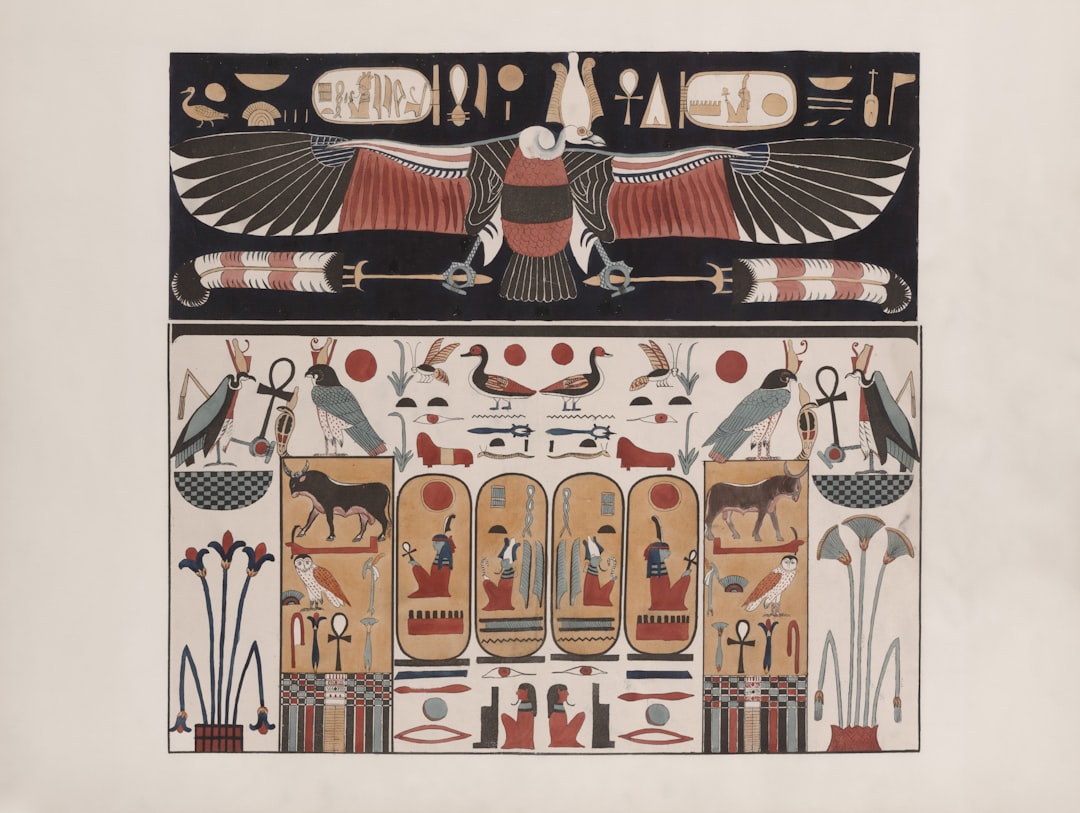The archaeological landscape of ancient India is rich and diverse, revealing a tapestry of cultures, traditions, and historical narratives. Among the most significant archaeological discoveries are the remnants of the Mauryan Empire, which flourished from approximately 322 to 185 BCE. Excavations at sites such as Pataliputra, the capital of the Mauryan Empire, have unearthed impressive structures, including palaces, fortifications, and urban planning that reflect advanced engineering and architectural skills.
The discovery of the Great Stupa at Sanchi, a UNESCO World Heritage site, further exemplifies the artistic and religious developments during this period. The stupa, originally built to house relics of the Buddha, showcases intricate carvings and sculptures that depict scenes from Buddhist teachings and the life of the Buddha himself. In addition to monumental architecture, archaeological findings have also included everyday artifacts that provide insight into the daily lives of the Mauryan people.
Pottery, tools, and coins discovered at various sites illustrate trade practices, social structures, and economic activities. The presence of standardized weights and measures indicates a sophisticated system of commerce that facilitated trade both within the empire and with neighboring regions. Furthermore, the discovery of urban centers like Taxila and Ujjain highlights the Mauryan Empire’s role as a hub for cultural exchange and intellectual pursuits.
These archaeological findings not only contribute to our understanding of the Mauryan Empire’s grandeur but also offer a glimpse into the lives of its inhabitants, their beliefs, and their interactions with the world around them.
Key Takeaways
- Archaeological discoveries provide physical evidence of ancient civilizations and their cultural practices.
- Inscriptions and rock edicts offer valuable insights into the political and social structures of ancient societies.
- Greek and Roman accounts provide external perspectives on the civilizations and events of the time.
- Buddhist and Jain texts offer religious and philosophical perspectives on ancient societies.
- Mauryan administrative records provide detailed information about the governance and bureaucracy of the Mauryan Empire.
- Numismatic evidence, such as coins and currency, can reveal economic and trade practices of ancient civilizations.
Inscriptions and Rock Edicts
One of the most remarkable aspects of the Mauryan Empire is its extensive use of inscriptions and rock edicts, particularly those attributed to Emperor Ashoka. After his conversion to Buddhism following the Kalinga War, Ashoka sought to promote moral governance and ethical conduct through a series of edicts inscribed on rocks and pillars throughout his empire. These inscriptions serve as a vital source of information about Ashoka’s policies, his commitment to non-violence, and his efforts to spread Buddhist teachings.
The edicts are written in various scripts, including Brahmi and Kharosthi, and are found in locations ranging from present-day India to Afghanistan. The content of these edicts is profound; they address issues such as social welfare, animal rights, and religious tolerance. For instance, one of Ashoka’s edicts emphasizes the importance of compassion towards all living beings, reflecting his Buddhist values.
Another edict encourages respect for different religious traditions, highlighting Ashoka’s vision of a harmonious society where diverse beliefs could coexist peacefully. The rock edicts not only provide insight into Ashoka’s reign but also serve as an early example of state-sponsored communication aimed at educating the populace about ethical governance. The preservation of these inscriptions over centuries has allowed historians to piece together a narrative of Ashoka’s transformative impact on Indian society.
Greek and Roman Accounts

The Mauryan Empire’s influence extended beyond its borders, capturing the attention of contemporary Greek and Roman historians.
In his work “Indica,” Megasthenes describes Pataliputra as a grand city with impressive architecture, bustling markets, and a well-organized administrative system.
His observations highlight not only the wealth and sophistication of the Mauryan Empire but also its cultural diversity, as he notes the coexistence of various ethnic groups and religions. Roman historians also documented their encounters with India during this period. Strabo, for instance, provides descriptions of trade routes connecting India with the Mediterranean world.
He emphasizes the wealth generated through trade in spices, textiles, and precious stones, which were highly sought after in Roman markets. These accounts underscore the significance of India as a center for commerce and cultural exchange in the ancient world. The interactions between Indian rulers and foreign emissaries facilitated not only economic ties but also the exchange of ideas and philosophies.
The Greek and Roman narratives serve as a testament to India’s prominence on the global stage during the Mauryan period.
Buddhist and Jain Texts
The religious landscape during the Mauryan Empire was marked by significant developments in Buddhism and Jainism, both of which produced a wealth of texts that provide insight into their philosophies and practices. Buddhist texts such as the “Dhammapada” and various sutras reflect the teachings of the Buddha and emphasize principles such as compassion, mindfulness, and ethical conduct. During Ashoka’s reign, Buddhism gained state support, leading to its spread across Asia.
The establishment of monasteries and stupas facilitated the dissemination of Buddhist teachings, while texts composed during this period often sought to codify these teachings for future generations. Jain texts also flourished during this time, with works like the “Tattvartha Sutra” articulating Jain philosophy’s core tenets: non-violence (ahimsa), truth (satya), and asceticism (tapas). The Mauryan period saw an increase in patronage for Jain communities, leading to the construction of temples and monastic complexes that served as centers for learning and spiritual practice.
The interactions between Buddhism and Jainism during this era were complex; while both religions shared common values such as non-violence and respect for all living beings, they also had distinct beliefs regarding cosmology and liberation. The texts produced during this time reflect these nuances and contribute to our understanding of how these two religions shaped societal values in ancient India.
Mauryan Administrative Records
The administrative framework established during the Mauryan Empire was one of its most remarkable achievements. The empire was characterized by a centralized bureaucracy that facilitated efficient governance across vast territories. Records from this period indicate a sophisticated system of administration that included various departments responsible for taxation, law enforcement, public works, and agriculture.
Kautilya’s “Arthashastra,” a treatise on statecraft attributed to Chanakya (Kautilya), provides detailed insights into governance strategies employed by Mauryan rulers. It outlines principles for effective administration, including espionage, diplomacy, and economic management. The Mauryan administrative records also highlight the importance placed on local governance through a network of officials who managed different regions within the empire.
These officials were responsible for collecting taxes, maintaining law and order, and implementing policies set forth by the central authority. The existence of detailed records suggests a high level of organization that allowed for effective communication between different levels of government. Additionally, inscriptions detailing land grants and tax exemptions reveal how rulers sought to encourage agricultural productivity and support local economies.
This administrative sophistication not only contributed to the stability of the Mauryan Empire but also laid the groundwork for future governance models in India.
Numismatic Evidence

Numismatic evidence from the Mauryan period provides critical insights into economic practices, trade networks, and cultural exchanges within ancient India. Coins minted during this era reflect not only monetary transactions but also serve as historical artifacts that convey information about political authority and artistic expression. The Mauryan Empire is known for its standardized coinage system that facilitated trade across vast distances.
Coins featuring symbols such as animals or deities often carried inscriptions that identified their origin or issued authority. The study of these coins reveals much about the economic landscape during the Mauryan period. For instance, silver punch-marked coins are among the earliest forms of currency used in India; their widespread circulation indicates a thriving economy based on trade in goods such as textiles, spices, and precious metals.
The iconography on coins also reflects cultural influences from neighboring regions due to trade interactions with Hellenistic cultures following Alexander’s conquests. Moreover, numismatic evidence has been instrumental in tracing historical timelines and understanding shifts in power dynamics within the empire.
The transition from punch-marked coins to more elaborate designs under later rulers signifies changes in economic policies or cultural influences over time. By examining these coins alongside other archaeological findings and historical texts, scholars can construct a more comprehensive picture of life in ancient India during the Mauryan Empire—a civilization marked by its remarkable achievements in governance, culture, religion, and trade.
In a related article, “Harnessing Technology Resources: A Comprehensive Guide,” readers can explore how technology can be utilized to uncover and analyze historical sources, such as those related to the Mauryan Empire. This guide provides valuable insights into how digital tools and resources can enhance the study of ancient history and help researchers uncover new information about this fascinating period. For more information, check out the article here.
FAQs
What are the sources of Mauryan history?
The sources of Mauryan history include archaeological findings, inscriptions, coins, and literary sources such as Buddhist and Jain texts.
What do archaeological findings reveal about Mauryan history?
Archaeological findings such as the remains of Mauryan palaces, pillars, and other structures provide valuable insights into the architecture, urban planning, and material culture of the Mauryan period.
How do inscriptions contribute to our understanding of Mauryan history?
Inscriptions found on pillars, rocks, and other surfaces provide important information about Mauryan rulers, their achievements, administrative policies, and religious patronage.
What can we learn from Mauryan coins?
Mauryan coins offer valuable information about the economic system, trade relations, and the symbols and inscriptions used during the Mauryan period.
How do literary sources such as Buddhist and Jain texts help in understanding Mauryan history?
Buddhist and Jain texts provide accounts of Mauryan rulers, their policies, and the socio-religious context of the time, offering a valuable perspective on the period.






















+ There are no comments
Add yours